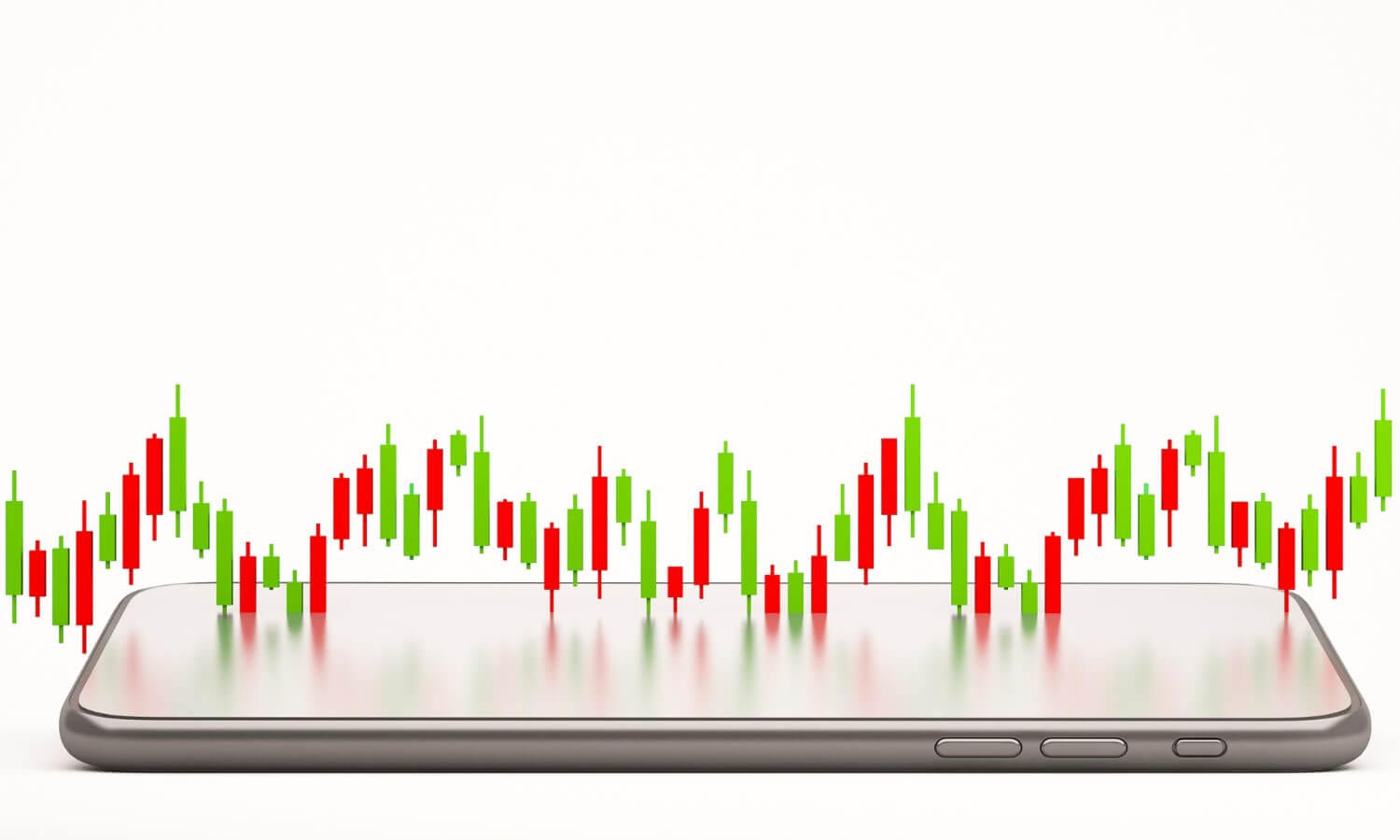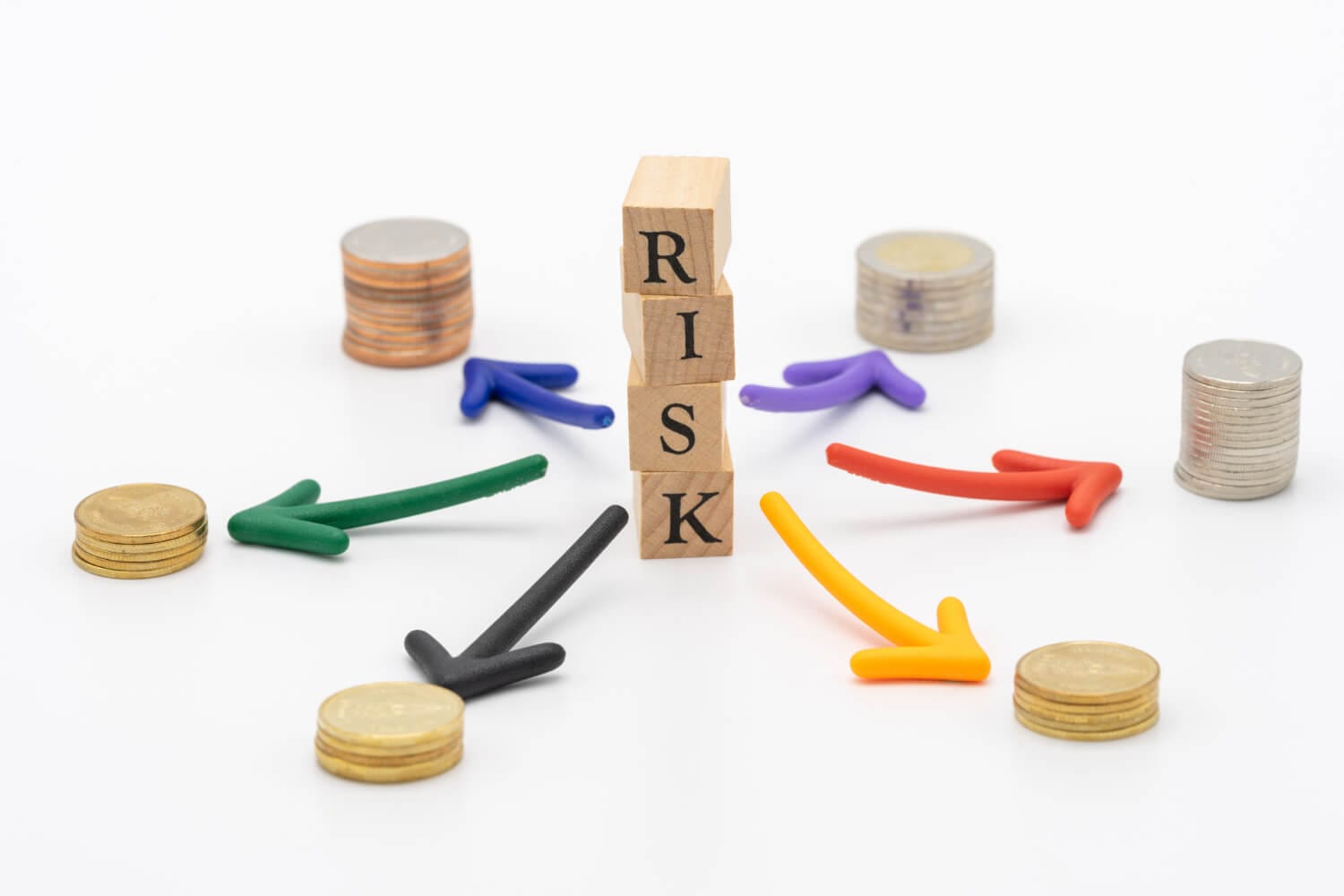I. Introduction to Forex Trading

1. A Brief Overview of the Forex Market
The forex (foreign exchange) market is the largest and most liquid financial market globally, where participants trade currencies. Here are some key points to understand:
- Market Size and Liquidity: The forex market has a daily trading volume of over $6 trillion (as of my knowledge cutoff date in September 2021). Its sheer size and liquidity make it attractive to traders and investors worldwide.
- Currency Pairs: Forex trading involves the simultaneous buying of one currency and selling of another, known as a currency pair. For example, in the EUR/USD pair, you buy euros and sell U.S. dollars.
- Market Participants: Participants in the forex market include banks, financial institutions, governments, corporations, and individual retail traders.
- 24-Hour Market: The forex market operates 24 hours a day, five days a week, spanning different time zones across the globe. This continuous trading allows for flexibility in terms of when you can trade.
- High Leverage: Forex brokers often offer leverage, allowing traders to control larger positions with a smaller amount of capital. While leverage can amplify gains, it also increases the potential for losses.
2. The Importance of Risk Management
Forex trading presents opportunities for profit, but it also comes with significant risks. Understanding and managing these risks is essential for long-term success. Key aspects of risk management include:
- Trading Plan: Developing a well-defined trading plan is the foundation of effective risk management. This plan outlines your trading goals, strategies, risk tolerance, and rules for entering and exiting trades.
- Risk Tolerance: Every trader has a different risk tolerance level. It’s crucial to assess how much capital you are willing and able to risk on each trade.
- Position Sizing: Position sizing involves determining the size of your trades based on your risk tolerance and the distance to your stop loss. It ensures that you don’t risk too much on a single trade.
- Stop Loss Orders: Setting stop loss orders is a vital risk management tool. A stop loss is an order to close a trade at a predetermined price level to limit potential losses.
- Diversification: Diversifying your trades across different currency pairs can help spread risk. Correlations between currency pairs should be considered to avoid overexposure to similar movements.
- Leverage Management: While leverage can amplify profits, it can also magnify losses. Using leverage judiciously and understanding its implications is crucial.
In conclusion, the introduction to forex trading emphasizes the vastness of the market and the need for risk management. Forex traders must approach the market with a well-thought-out plan, a clear understanding of their risk tolerance, and the tools to protect their capital, setting the stage for successful trading.
II. Understanding Forex Losses

1. Different Types of Forex Losses
In the forex market, traders may encounter various types of losses, which can be categorized as follows:
- Realized Losses: These are actual losses incurred when a trader closes a losing position. For example, if you buy EUR/USD at 1.2000 and sell it at 1.1950, you have realized a loss of 50 pips (a pip is the smallest price move in the forex market).
- Unrealized Losses: Also known as paper losses, these occur when a trader holds an open position that is currently showing a negative profit but has not yet been closed. Unrealized losses can fluctuate as market prices change.
- Margin Calls: If a trader’s account balance falls below the required margin level due to trading losses, the broker may issue a margin call. This means the trader must either deposit more funds or close losing positions to meet the margin requirement.
2. The Psychological Impact of Losses
Losses in forex trading can have a profound psychological impact on traders. Understanding these psychological aspects is crucial for managing losses effectively:
- Fear: Losses can trigger fear, causing traders to second-guess their decisions and hesitate to take trades, even when their analysis suggests they should.
- Greed: After experiencing a series of wins, traders may become overconfident and increase their risk levels. This overconfidence can lead to larger losses when the market reverses.
- Revenge Trading: Some traders attempt to recover losses quickly by taking impulsive and high-risk trades. This often results in more significant losses and emotional stress.
- Loss Aversion: Traders may be more sensitive to losses than gains, leading them to exit profitable trades prematurely and hold onto losing positions in the hope of a reversal.
- Discipline and Patience: Losses test a trader’s discipline and patience. Successful traders learn to stick to their trading plans and avoid making impulsive decisions based on emotions.
In summary, understanding the different types of forex losses and the psychological impact they can have is vital for traders. Managing losses effectively requires a combination of risk management strategies, emotional discipline, and a resilient mindset. By acknowledging that losses are a part of trading, traders can focus on minimizing them and maintaining a long-term perspective.
III. Risk Management Strategies

Effective risk management is the cornerstone of successful forex trading. It involves strategies and techniques to protect your capital and minimize the impact of losses. Here are the key components of risk management:
1. Setting Up a Trading Plan
- Goals and Objectives: Define your trading goals and objectives clearly. Are you trading for income, wealth accumulation, or as a hobby? Having clear goals helps you determine your risk tolerance and trading approach.
- Trading Strategies: Specify the strategies and methods you’ll use to analyze the market and make trading decisions. This can include technical analysis, fundamental analysis, or a combination of both.
- Risk Tolerance: Assess your risk tolerance, which is the amount of capital you can comfortably afford to lose without affecting your financial well-being. Your risk tolerance guides your position sizing.
- Rules for Entry and Exit: Establish clear rules for entering and exiting trades. For example, you might use specific technical indicators, price levels, or fundamental events as triggers.
2. Determining Your Risk Tolerance
- Financial Situation: Consider your financial situation, including income, savings, and other investments. A trader with substantial savings may have a higher risk tolerance than someone with limited resources.
- Psychological Factors: Assess your psychological readiness to handle losses. If losses cause emotional distress or disrupt your trading discipline, your risk tolerance may be lower.
- Risk Percentage: A common rule of thumb is to risk no more than 1-2% of your trading capital on a single trade. This ensures that you can withstand a series of losing trades without depleting your account.
3. Position Sizing and Leverage
- Position Sizing: Determine the size of your trading positions based on your risk tolerance and the distance to your stop loss. Proper position sizing ensures that you don’t risk too much on any single trade.
- Leverage: Understand the implications of leverage. While it can amplify profits, it also increases the potential for losses. Use leverage conservatively and be aware of margin requirements.
- Risk-Reward Ratio: Calculate and consider the risk-reward ratio before entering a trade. A favorable risk-reward ratio (e.g., 1:2 or higher) means that your potential reward is at least twice your risk, making it easier to manage losses.
- Multiple Positions: Diversify your trading capital by spreading it across multiple positions or currency pairs. This reduces the impact of a single losing trade on your overall portfolio.
- Pyramiding: Some traders pyramid into winning positions by adding to a trade as it becomes profitable. However, this should be done cautiously and with a clear strategy.
In summary, risk management strategies in forex trading involve creating a structured trading plan, assessing your risk tolerance, determining position sizes, and using leverage judiciously. By implementing these strategies, traders can protect their capital, limit losses, and increase the probability of long-term success in the forex market.
IV. Technical Analysis for Loss Minimization
Technical analysis is a crucial aspect of forex trading that involves studying historical price charts and patterns to make informed trading decisions. It can help traders minimize losses by providing insights into potential entry and exit points. Here are key components of technical analysis:
1. Candlestick Patterns

Candlestick patterns are visual representations of price movements over a specific time period (e.g., minutes, hours, days). These patterns help traders gauge market sentiment and potential trend reversals. Some common candlestick patterns include:
- Doji: A doji occurs when the opening and closing prices are nearly equal, signaling market indecision. It can precede a trend reversal.
- Engulfing Patterns: Bullish engulfing (larger green candle followed by a smaller red one) and bearish engulfing (larger red candle followed by a smaller green one) suggest potential trend reversals.
- Hammer and Shooting Star: These single-candle patterns indicate potential reversals. A hammer (bullish) forms after a downtrend, while a shooting star (bearish) appears after an uptrend.
- Double Tops and Bottoms: These patterns occur when price tests a resistance (double top) or support (double bottom) level twice without breaking through. They suggest potential trend reversals.
2. Moving Averages
Moving averages are used to smooth out price data and identify trends. They can be effective tools for minimizing losses:
- Simple Moving Average (SMA): SMA calculates the average closing price over a specified number of periods. Traders use SMAs to identify trends and potential support/resistance levels.
- Exponential Moving Average (EMA): EMA gives more weight to recent price data, making it more responsive to current market conditions. Traders often use EMAs for trend confirmation.
- Golden Cross and Death Cross: The golden cross occurs when a short-term EMA crosses above a long-term EMA, signaling a potential bullish trend. Conversely, the death cross occurs when a short-term EMA crosses below a long-term EMA, indicating a potential bearish trend.
3. Support and Resistance Levels
Support and resistance levels are price levels at which the market tends to stall or reverse. Identifying these levels can help traders set effective stop loss and take profit orders:
- Support Levels: These are price levels at which buying interest is strong enough to prevent further price declines. Traders may set stop losses just below support levels.
- Resistance Levels: These are price levels at which selling interest is strong enough to halt price increases. Traders may set take profit orders just below resistance levels.
- Breakouts: When price breaks through a support or resistance level, it can signal a significant price move. Traders often use breakouts to enter or exit trades.
In summary, technical analysis is a valuable tool for minimizing losses in forex trading. By studying candlestick patterns, moving averages, and support/resistance levels, traders can make informed decisions about when to enter, exit, or adjust their positions, reducing the risk of substantial losses. However, it’s important to combine technical analysis with other forms of analysis and risk management techniques for a comprehensive trading strategy.
V. Fundamental Analysis for Loss Minimization

Fundamental analysis involves assessing the economic, political, and social factors that influence currency exchange rates. This analysis aims to predict the direction of currency movements based on underlying economic conditions. Here are the key components of fundamental analysis in the context of minimizing losses:
1. Economic Indicators
- Gross Domestic Product (GDP): GDP measures the total economic output of a country. A growing GDP often leads to a stronger currency, while a shrinking GDP can weaken it.
- Inflation Rate: Inflation erodes the purchasing power of a currency. Central banks may raise interest rates to combat high inflation, which can strengthen the currency.
- Interest Rates: A higher interest rate in a country typically attracts foreign capital, increasing demand for its currency. Conversely, lower interest rates can lead to a weaker currency.
- Employment Data: Employment figures, including unemployment rates and job creation, can affect consumer spending and economic stability, influencing currency values.
2. Central Bank Policies
- Interest Rate Decisions: Central banks, such as the Federal Reserve (U.S.), the European Central Bank (ECB), and the Bank of Japan (BOJ), set interest rates. Traders closely monitor rate decisions and related statements, as they can significantly impact currency values.
- Quantitative Easing (QE): Central banks may implement QE programs to stimulate the economy by purchasing government bonds. The influx of money into the financial system can weaken a currency.
- Forward Guidance: Central banks often provide forward guidance on their future policy intentions. Clarity or surprises in these communications can affect market sentiment.
3. Geopolitical Events
- Political Stability: Political events, such as elections, government changes, or conflicts, can disrupt currency markets. Traders watch for signs of political stability or instability in a country.
- Trade Agreements: Trade negotiations and agreements between countries can impact currencies. Announcements of tariffs, trade disputes, or trade deals can lead to currency fluctuations.
- Global Events: Events with international implications, like natural disasters or health crises (e.g., COVID-19), can influence currency markets. These events may trigger safe-haven flows into certain currencies.
4. News and Economic Releases

- Economic Calendars: Traders use economic calendars to track scheduled releases of economic data, such as employment reports, retail sales, and manufacturing data. These releases can lead to significant market movements.
- Market Sentiment: News sentiment and market expectations can play a crucial role in forex trading. Traders often react to news events, but it’s essential to distinguish between expected and unexpected outcomes.
In summary, fundamental analysis in forex trading involves analyzing economic indicators, central bank policies, geopolitical events, and news releases to gain insights into currency movements. By staying informed about these factors, traders can make more informed decisions about their trades, potentially minimizing losses and capitalizing on opportunities. It’s common for traders to use both technical and fundamental analysis in combination to make well-rounded trading decisions.
VI. Trading Strategies to Minimize Losses

Trading strategies are approaches that traders use to enter and exit positions in the forex market. Different strategies have varying risk profiles and time horizons. Selecting the right strategy can help minimize losses and maximize profits. Here are several trading strategies commonly used by forex traders:
1. Scalping
Scalping is a short-term trading strategy that aims to profit from small price movements. Scalpers open and close multiple positions throughout the day, often holding trades for seconds or minutes. The goal is to accumulate small gains while minimizing exposure to market fluctuations. Key points:
- Quick Trades: Scalpers execute rapid trades, often in high-frequency environments.
- Tight Stop Losses: Scalpers use tight stop loss orders to limit potential losses.
- Risk Management: Despite the small profit targets, scalpers must manage risk effectively due to the frequency of trades.
2. Day Trading
Day trading involves opening and closing positions within the same trading day, with the goal of profiting from intraday price movements. Day traders focus on technical analysis, chart patterns, and short-term trends. Key points:
- Intraday Focus: Day traders avoid overnight risk by closing all positions before the market’s close.
- Technical Analysis: They rely heavily on technical indicators and charts for decision-making.
- Risk Management: Setting stop loss orders is crucial for limiting losses when trades don’t go as planned.
3. Swing Trading
Swing trading aims to capture price swings or “swings” within a trend. Traders hold positions for several days to weeks, making it a medium-term strategy. Swing traders use technical and fundamental analysis to identify potential entry and exit points. Key points:
- Trend Following: Swing traders aim to align with the overall trend, buying during uptrends and selling during downtrends.
- Risk-Reward Ratio: They often seek favorable risk-reward ratios, which can help minimize losses and maximize gains.
- Patience: Swing traders need patience to allow positions to develop over several days or weeks.
4. Long-Term Investing
Long-term investing in forex is less common but involves holding positions for months or even years. It’s based on a fundamental analysis approach, focusing on economic and geopolitical factors. Key points:
- Macro View: Long-term investors take a broader view of the currency market, considering economic cycles and geopolitical developments.
- Lower Trading Frequency: They make fewer trades and may hold positions through periods of volatility.
- Risk Diversification: Long-term investors often diversify their portfolios by holding multiple currency pairs.
5. Carry Trade
The carry trade strategy involves borrowing funds in a currency with a low-interest rate and investing them in a currency with a higher interest rate. Traders profit from the interest rate differential (carry) between the two currencies. Key points:
- Interest Rate Differential: Traders aim to capture the interest rate spread between the two currencies.
- Risk Management: While carry trades can be profitable, they are not risk-free. Exchange rate fluctuations can impact gains or losses.
- Consideration of Economic Events: Traders must monitor central bank policies and economic conditions in both countries.
In summary, the choice of trading strategy in forex depends on factors like risk tolerance, trading style, and time commitment. Each strategy has its unique characteristics and risk profiles. Traders can use these strategies to minimize losses by aligning their approach with their objectives and market conditions. Additionally, implementing proper risk management techniques, such as setting stop loss orders and using appropriate position sizes, is crucial regardless of the chosen strategy.
VII. Stop Loss and Take Profit Orders

Stop loss (SL) and take profit (TP) orders are essential tools in forex trading that help traders manage their risk and lock in profits. Understanding how to set and use these orders effectively is crucial for minimizing losses and optimizing trade outcomes.
1. How to Set Stop Loss and Take Profit Levels
Stop Loss (SL):
A stop loss order is an instruction to close a position at a specified price level to limit potential losses.
To set a stop loss:
Determine the price level at which you are willing to accept a loss if the trade goes against you.
Place the stop loss order with your broker, specifying the price level.
Common approaches include setting the SL just beyond a support or resistance level or using technical indicators to determine a logical stop level.
Take Profit (TP):
A take profit order is an instruction to close a position at a predefined price level to secure profits.
To set a take profit:
Identify a price level at which you believe the trade has a high probability of reaching a profit.
Place the take profit order with your broker, specifying the price level.
Traders often set TP levels based on support/resistance levels, technical analysis, or target risk-reward ratios.
2. Trailing Stop Losses
Trailing Stop Loss:
A trailing stop loss order is a dynamic stop loss that moves with the market price in the trader’s favor. The trailing stop “trails” a set distance behind the current market price.
If the market moves in the trader’s favor, the trailing stop moves closer to the market price, securing profits.
If the market reverses and moves against the trader, the trailing stop remains in place until the specified trigger point is hit, at which point it becomes a regular stop loss order.
Trailing stops help traders capture larger profits during strong trends while protecting against reversals.
3. Benefits of Using Stop Loss and Take Profit Orders

- Risk Management: SL orders limit potential losses, ensuring that traders do not lose more than they are willing to risk on a trade.
- Emotion Control: SL orders help traders avoid emotional decision-making. When a trade goes against them, they can exit at the predetermined SL level without hesitation.
- Locking in Profits: TP orders secure profits by automatically closing a position when the market reaches a favorable price level.
- Discipline: Using SL and TP orders enforces discipline, helping traders stick to their trading plans and risk management strategies.
- Time Efficiency: SL and TP orders work 24/5 without constant monitoring, allowing traders to manage their positions even when they can’t be at their trading screens.
4. Considerations When Setting Stop Loss and Take Profit Levels
- Volatility: Consider the currency pair’s typical price fluctuations and volatility when setting stop and take profit levels. More volatile pairs may require wider stops.
- Timeframes: The timeframe you’re trading on can influence where you set SL and TP levels. Shorter timeframes often have tighter stops and targets.
- Market Conditions: Be aware of major economic events, news releases, or geopolitical developments that could impact the market. Adjust your SL and TP levels accordingly.
- Risk-Reward Ratio: Ensure that your potential reward (from TP) justifies the risk (from SL) in each trade. A favorable risk-reward ratio is typically 1:2 or better.
In summary, stop loss and take profit orders are essential risk management tools in forex trading. They allow traders to control losses and lock in profits, maintain discipline, and reduce emotional decision-making. Setting appropriate SL and TP levels based on market conditions, volatility, and trading objectives is crucial for minimizing losses and optimizing trading outcomes. Additionally, trailing stop losses can be particularly useful in capturing larger profits during trending market conditions.
VIII. Risk-Reward Ratio

The risk-reward ratio is a fundamental concept in forex trading that helps traders assess the potential profitability of a trade relative to the risk undertaken. Understanding and using this ratio effectively is crucial for managing losses and making informed trading decisions.
1. Importance of a Favorable Risk-Reward Ratio
- Definition: The risk-reward ratio represents the potential reward of a trade relative to the risk taken. It’s typically expressed as a ratio, such as 1:2, where the first number represents the potential risk, and the second number represents the potential reward.
- Risk Management: A favorable risk-reward ratio ensures that the potential reward outweighs the potential risk, making it easier to manage losses and protect trading capital.
- Profitability: Consistently using a positive risk-reward ratio can lead to profitable trading over the long term, even if some trades result in losses.
2. How to Calculate and Use It
- Calculation: To calculate the risk-reward ratio, you need to determine three key values:
- Entry Price: The price at which you enter a trade.
- Stop Loss Level: The price at which you’re willing to exit the trade to limit losses.
- Take Profit Level: The price at which you plan to exit the trade to secure profits.
The risk-reward ratio is then calculated by dividing the potential reward (the difference between the entry price and take profit level) by the potential risk (the difference between the entry price and stop loss level).
Risk-Reward Ratio = (Take Profit – Entry Price) / (Entry Price – Stop Loss)
Using the Risk-Reward Ratio:
Traders typically aim for a risk-reward ratio of at least 1:2 or higher, meaning that for every dollar (or pip) risked (the potential loss), they aim to make at least two dollars (or pips) in profit (the potential gain).
A favorable risk-reward ratio allows traders to have more winning trades than losing ones and still come out ahead in the long run. Even if only half of their trades are profitable, the larger profits from winning trades compensate for the losses.
It helps traders set realistic profit targets and ensures that the potential reward justifies the risk taken.
3. Examples:
- 1:2 Risk-Reward Ratio:
If you enter a trade at $100 and set a stop loss at $90, your potential risk is $10 ($100 – $90).
If you set a take profit level at $120, your potential reward is $20 ($120 – $100).
The risk-reward ratio in this case is 1:2 ($10 risk / $20 reward).
- 1:3 Risk-Reward Ratio:
If you enter a trade at $50 and set a stop loss at $45, your potential risk is $5 ($50 – $45).
If you set a take profit level at $65, your potential reward is $15 ($65 – $50).
The risk-reward ratio in this case is 1:3 ($5 risk / $15 reward).
4. Considerations When Using Risk-Reward Ratios
- Market Conditions: Volatile markets may require wider stop losses and take profit levels to account for price fluctuations.
- Trading Style: Different trading styles (e.g., scalping, day trading, swing trading) may have varying risk-reward ratio preferences.
- Win Rate: Traders with a lower win rate may require a higher risk-reward ratio to remain profitable, while those with a higher win rate may tolerate a lower ratio.
- Market Analysis: The risk-reward ratio should align with your analysis and trading strategy. Avoid entering trades with unfavorable ratios.
In summary, the risk-reward ratio is a critical tool for managing losses and maximizing profitability in forex trading. By ensuring that potential profits outweigh potential losses in each trade, traders can build a sustainable and profitable trading strategy. However, it’s essential to strike a balance between a favorable risk-reward ratio and achievable profit targets based on market conditions and trading objectives.
IX. Emotional Discipline and Psychology
Emotional discipline and psychology play a pivotal role in forex trading success. The ability to manage emotions effectively can help traders minimize losses and make rational trading decisions. Here are key aspects of emotional discipline and psychology in forex trading:
1. Emotions in Trading

- Fear: Fear often arises when traders face potential losses. It can lead to hesitation, avoidance of trades, or exiting positions prematurely out of panic.
- Greed: Greed can manifest when traders experience winning streaks and become overconfident. It may lead to overtrading, taking excessive risks, and neglecting risk management.
- Revenge Trading: After suffering losses, some traders engage in revenge trading, attempting to recover quickly. This impulsive behavior can lead to more significant losses.
- Impatience: Impatience can cause traders to abandon their trading plans prematurely, expecting immediate results. This can result in missed profit opportunities and increased losses.
- Overtrading: Emotional trading can lead to overtrading, where traders take too many positions without proper analysis or risk management.
2. Strategies for Emotional Discipline
- Develop a Trading Plan: A well-structured trading plan helps traders set clear objectives, define strategies, and outline risk management rules. Following a plan reduces emotional decision-making.
- Risk Management: Implementing proper risk management techniques, such as setting stop loss and take profit orders, helps control potential losses and reduce emotional stress.
- Stay Informed and Analytical: Base trading decisions on analysis rather than emotions. Keep abreast of market news, technical analysis, and economic indicators to make informed choices.
- Practice Patience: Patience is essential in forex trading. Wait for setups that align with your trading plan and avoid impulsive actions.
- Accept Losses: Understand that losses are part of trading. Accept them as a natural occurrence and a learning opportunity.
- Mental and Emotional Well-being: Take care of your physical and mental health. Proper sleep, exercise, and stress management can help maintain emotional stability.
- Avoid Revenge Trading: After a losing trade, avoid the urge to immediately enter another trade to recover losses. Stick to your plan and wait for favorable opportunities.
C. Trading Psychology Tools
- Keep a Trading Journal: Maintaining a trading journal allows you to track your emotions, analyze your trades, and identify patterns in your decision-making.
- Mental Exercises: Some traders use mental exercises like meditation or visualization to stay calm and focused during trading.
- Trading Education: Continuously educate yourself about trading psychology. Books, courses, and seminars can provide valuable insights into managing emotions.
- Support Networks: Joining trading communities or seeking advice from experienced traders can provide emotional support and insights into coping with trading-related stress.
In conclusion, emotional discipline and psychology are integral to successful forex trading. Traders must recognize and manage emotions such as fear and greed to make rational, well-informed decisions. Developing a trading plan, implementing risk management strategies, and staying disciplined in the face of emotional challenges are essential steps toward minimizing losses and achieving long-term trading success.
X. Continuous Learning and Improvement

In the ever-evolving world of forex trading, staying informed, adapting to changing market conditions, and continuously improving your skills are essential for minimizing losses and maximizing profitability. Here are key aspects of continuous learning and improvement in forex trading:
1. The Importance of Continuous Learning
- Dynamic Markets: The forex market is dynamic and influenced by a wide range of factors, including economic events, geopolitical developments, and shifts in market sentiment. Staying informed about these changes is crucial.
- Technological Advances: Advances in trading technology and tools require traders to stay updated and adapt to new platforms, trading algorithms, and strategies.
- Regulatory Changes: Forex markets are subject to regulatory changes and updates. Traders need to be aware of any new rules or regulations that may affect their trading activities.
- Market Analysis: Keeping up with the latest developments in technical and fundamental analysis techniques is essential for making informed trading decisions.
2. Strategies for Continuous Learning and Improvement
- Education and Training: Invest in education and training programs that cover various aspects of forex trading, including technical analysis, fundamental analysis, risk management, and trading psychology.
- Market Research: Regularly research and read about market developments, news, and events that can impact currency prices.
- Demo Trading: Utilize demo accounts to practice and test new strategies or trading techniques without risking real capital.
- Analysis of Past Trades: Review your past trades and analyze both successful and unsuccessful ones. Identify patterns and areas for improvement.
- Keep a Trading Journal: Maintain a detailed trading journal to record your trades, strategies, emotions, and lessons learned. This journal can be a valuable source of insight.
- Stay Informed: Follow financial news sources, attend webinars, and participate in trading forums or communities to stay informed about the latest market developments and trading strategies.
3. Adapting to Market Conditions
- Market Cycles: Understand that forex markets go through various cycles, including trending and ranging periods. Adapt your strategies to current market conditions.
- Economic Calendar: Be aware of the economic calendar and major news releases that can lead to increased market volatility. Adjust your trading approach accordingly.
- Risk Management Evolution: Continuously refine your risk management techniques based on your trading experience and changing market conditions.
4. Setting Realistic Goals

- Realistic Expectations: Set achievable and realistic trading goals. Avoid aiming for instant wealth and understand that consistent profitability often takes time.
- Performance Metrics: Establish performance metrics to measure your progress and assess whether you’re meeting your goals. These metrics may include win rate, risk-reward ratio, and overall profitability.
5. Staying Disciplined
- Consistency: Maintain consistency in your trading approach. Avoid the temptation to constantly switch strategies or chase after the latest trading fad.
- Stick to Your Plan: Adhere to your trading plan and risk management rules. Avoid impulsive decisions driven by emotions.
- Review and Adjust: Periodically review your trading plan and make necessary adjustments based on your learning experiences and evolving market conditions.
In summary, continuous learning and improvement are essential for forex traders looking to minimize losses and achieve long-term success. Staying informed, adapting to changing market conditions, and continuously refining your trading skills and strategies are key components of this process. It’s a journey that requires dedication, discipline, and a commitment to ongoing education and self-assessment.
XI. Risk Mitigation through Portfolio Diversification
Portfolio diversification is a risk management strategy that involves spreading your investments across a range of assets or trading positions to reduce the impact of a poor-performing asset or trade. In the context of forex trading, diversification primarily refers to managing risk across multiple currency pairs or positions. Here are key aspects of risk mitigation through portfolio diversification:
1. Understanding Portfolio Diversification

- Diversification Principle: The principle of diversification is based on the idea that by holding a variety of assets or positions, the risk of a significant loss in the overall portfolio is reduced. Different assets or positions may react differently to market events, helping to offset losses in one area with gains in another.
- Types of Diversification: Diversification can occur in several ways, including:
- Asset Class Diversification: Investing in different asset classes, such as stocks, bonds, commodities, and forex.
- Sector Diversification: Spreading investments across various industry sectors.
- Geographic Diversification: Investing in assets or currencies from different countries or regions.
- Timeframe Diversification: Holding both short-term and long-term positions.
- Currency Pair Diversification: Trading multiple currency pairs in forex.
2. Portfolio Diversification in Forex Trading
Currency Pair Diversification: In forex trading, diversification typically involves trading multiple currency pairs simultaneously. Traders may choose pairs from different regions or currency groups (e.g., major, minor, exotic) to reduce risk.
Benefits of Currency Pair Diversification:
- Risk Reduction: Diversifying across currency pairs can reduce the impact of losses in any single trade or pair.
- Increased Opportunities: Different currency pairs may present unique trading opportunities, allowing traders to capitalize on a broader range of market conditions.
- Smoothing Returns: Diversification can help smooth out the performance of a trading portfolio over time, reducing the potential for significant drawdowns.
Considerations for Currency Pair Diversification:
- Correlation: Be mindful of the correlation between currency pairs. Highly correlated pairs may move in tandem, reducing the benefits of diversification.
- Risk Management: Even with diversification, risk management remains crucial. Use appropriate position sizing, stop losses, and take profit orders for each trade.
3. Implementing Portfolio Diversification
- Selecting Currency Pairs: Choose currency pairs that align with your trading strategy and risk tolerance. Consider factors like liquidity, volatility, and economic conditions in the countries represented by the pairs.
- Position Sizing: Determine the appropriate position size for each currency pair based on your overall risk tolerance and portfolio size. Ensure that no single trade or pair dominates your portfolio.
- Monitoring and Rebalancing: Regularly monitor the performance of your portfolio and make adjustments as needed. This may involve closing or reducing positions in poorly performing pairs or adding positions in promising ones.
- Risk Assessment: Continuously assess the risk in your portfolio and make changes to maintain your desired risk level. For example, if you notice high correlation among your pairs, consider adding less-correlated pairs to enhance diversification.
In summary, risk mitigation through portfolio diversification is an essential strategy for forex traders looking to minimize losses. By trading multiple currency pairs and managing risk across their portfolio, traders can reduce the impact of individual trade losses and increase their chances of achieving consistent profitability. However, it’s important to balance diversification with proper risk management techniques to ensure a well-rounded and effective trading strategy.
XII. Managing Overnight and Weekend Risk

Overnight and weekend risk management is a critical aspect of forex trading, as currency markets operate 24 hours a day during the trading week. Traders need strategies to safeguard their positions during periods when they cannot actively monitor the market. Here are key considerations for managing overnight and weekend risk:
1. Understanding Overnight and Weekend Risk
- Market Hours: Forex markets are open 24 hours a day, from Sunday evening (in the Eastern Time Zone) to Friday evening. However, they are closed during the weekend (Saturday).
- Overnight Gaps: Overnight and weekend gaps occur when there is a significant price difference between the closing price on Friday and the opening price on Sunday. These gaps can result from news events, economic releases, or market sentiment changes over the weekend.
2. Risk Mitigation Strategies
- Utilizing Stop Loss Orders: One of the most common ways to manage overnight and weekend risk is to set stop loss orders. These orders automatically close your positions at a specified price level to limit potential losses. Traders often use wider stop losses for positions held overnight or over the weekend to account for the possibility of overnight gaps.
- Reducing Position Size: Some traders opt to reduce their position size for trades held overnight or over the weekend. This reduces exposure to potential large gaps.
- Avoiding News Releases: If possible, avoid holding positions over weekends that coincide with major economic news releases, as these events can lead to heightened volatility and gaps.
- Risk-Free Weekend Trading: Some brokers offer risk-free weekend trading, where they guarantee that your stop loss and take profit orders will be executed at the specified levels even if a gap occurs.
3. Hedging Strategies
- Hedging with Correlated Assets: Traders can hedge their forex positions by taking positions in correlated assets. For example, if you are long EUR/USD, you might short USD/JPY to hedge your exposure to the US dollar.
- Using Options: Forex options can provide a way to hedge forex positions. Options allow you to buy or sell a currency pair at a predetermined price (the strike price) within a specified time frame, providing protection against adverse price movements.
4. Avoiding Holding Large Positions
- Scalping and Day Trading: Some traders prefer scalping or day trading strategies, where positions are opened and closed within the same trading day. This avoids the need to hold positions overnight or over the weekend.
- Clearing Positions Before the Weekend: Many traders choose to close or reduce positions before the weekend to eliminate the risk associated with overnight gaps.
5. Monitoring News Events
- Economic Calendar: Stay informed about economic events and news releases, especially those that may occur over the weekend. Be prepared for potential market-moving events when markets reopen.
- Limit Orders: Use limit orders to specify the price at which you want to enter or exit a trade. This can help you avoid unfavorable price executions during periods of high volatility, such as the market open after the weekend.
XIII. Staying Informed About Market Events

In forex trading, staying informed about market events is essential for making informed decisions, minimizing losses, and capitalizing on trading opportunities. Here are key aspects of staying informed about market events:
1. Importance of Market Information
- Dynamic Markets: Forex markets are highly dynamic and influenced by a wide range of factors, including economic releases, geopolitical developments, central bank actions, and global events. Staying informed helps traders react to these changes effectively.
- Market Sentiment: News and events can significantly impact market sentiment, driving price movements. Understanding current market sentiment is crucial for making timely trading decisions.
- Risk Management: Being aware of potential market-moving events allows traders to adjust their risk management strategies and protect their capital in volatile conditions.
2. Sources of Market Information
- Economic Calendars: Economic calendars provide a schedule of upcoming economic releases and events that can impact currency markets. Traders use these calendars to plan their trading activities.
- News Services: Financial news services, such as Bloomberg, Reuters, and CNBC, offer real-time updates on market events, economic indicators, and geopolitical news.
- Central Bank Announcements: Pay attention to central bank announcements, including interest rate decisions, monetary policy statements, and speeches by central bank officials. These can have a significant impact on currency values.
- Government Reports: Government reports, such as employment data, GDP figures, and inflation reports, provide insights into a country’s economic health and can move currency markets.
- Technical Analysis: Technical analysis tools and platforms offer chart patterns, indicators, and price data that help traders analyze market trends and make informed trading decisions.
- Social Media and Forums: Online trading communities, social media platforms, and forums can provide insights into market sentiment and news updates. However, verify information from credible sources.
3. Strategies for Staying Informed
- Set Up Alerts: Many trading platforms and news websites allow you to set up alerts for specific events or price levels. Use these alerts to stay updated on market events even when you’re not actively trading.
- Daily Routine: Make staying informed a part of your daily trading routine. Spend time reviewing economic calendars, checking news updates, and analyzing market data.
- Stay Focused: Focus on the events and news that are most relevant to your trading strategy and the currency pairs you’re trading. Avoid information overload.
- Evaluate Sources: Be discerning about your information sources. Rely on reputable and trusted sources for accurate and timely market information.
- Continued Learning: Invest in your trading education to improve your ability to analyze market events and their potential impact on currency prices.
4. Risk Management Based on Market Events
- Adjusting Position Sizes: In anticipation of major market events, consider adjusting your position sizes or reducing your exposure to limit potential losses.
- Use of Stop Loss Orders: When significant market events are expected, using wider stop loss orders can provide protection against sudden and adverse price movements.
- Avoid Overtrading: During periods of high uncertainty or major news releases, it’s advisable to avoid overtrading and stick to a disciplined approach.
In summary, staying informed about market events is a fundamental aspect of forex trading. It allows traders to react to changing market conditions, make informed decisions, and effectively manage risk. By using credible sources, setting up alerts, and incorporating market information into their trading routines, traders can stay ahead of market developments and minimize potential losses.
XIV. Psychology of Dealing with Losses

The psychology of dealing with losses is a critical aspect of forex trading, as losses are an inevitable part of the journey. How traders handle losses emotionally and mentally can significantly impact their overall trading success. Here are key aspects of the psychology of dealing with losses:
1. Understanding the Emotional Impact
- Loss Aversion: Humans tend to feel the pain of losses more strongly than the pleasure of gains. This psychological bias can lead to emotional reactions when facing losses.
- Fear and Anxiety: Losses can trigger fear and anxiety, which may result in hesitation, self-doubt, or impulsive decisions to recover losses.
- Frustration and Anger: A series of losses can lead to frustration and anger, potentially causing traders to take undue risks or engage in revenge trading.
- Self-Blame: Traders may blame themselves for losses, leading to feelings of guilt or inadequacy.
2. Strategies for Dealing with Losses
- Acceptance: Understand that losses are a natural part of trading. Accepting this reality can help reduce the emotional impact of losses.
- Emotional Detachment: Strive to remain emotionally detached from individual trades. Focus on the long-term performance of your trading strategy.
- Risk Management: Implement effective risk management strategies, such as setting stop loss orders, to limit losses and protect your trading capital.
- Positive Self-Talk: Replace negative self-talk with positive and constructive thoughts. Avoid blaming yourself for losses and focus on learning from them.
- Review and Analysis: Analyze your losing trades objectively. Identify what went wrong, whether it was a mistake or a market condition, and use this information to improve.
- Maintain Discipline: Stick to your trading plan and risk management rules, especially after a loss. Avoid impulsive decisions to recover losses.
3. Maintaining a Healthy Mindset
- Resilience: Develop mental resilience to bounce back from losses and setbacks. Keep a long-term perspective and focus on your overall trading performance.
- Patience: Understand that it takes time to recover from losses and achieve consistent profitability. Avoid rushing into high-risk trades to compensate for losses.
- Continuous Learning: Approach losses as opportunities for growth and learning. Use them as a catalyst to improve your trading skills and strategy.
- Stress Management: Incorporate stress management techniques into your daily routine. Techniques like meditation, exercise, and relaxation can help you maintain a calm mindset.
- Support System: Consider seeking support from trading mentors, peers, or a therapist if you find it challenging to cope with losses on your own.
4. Avoiding Revenge Trading
- Revenge trading: This is a common emotional reaction to losses, where traders try to quickly recover their losses by taking high-risk trades. It often leads to more significant losses.
- Recognize the Urge: Be aware of the impulse to engage in revenge trading, and resist it by following your trading plan and risk management rules.
In summary, the psychology of dealing with losses is a critical component of successful forex trading. Traders must learn to manage the emotional impact of losses, maintain a healthy mindset, and avoid impulsive behaviors like revenge trading. By accepting losses as part of the trading journey, focusing on continuous improvement, and practicing emotional detachment, traders can navigate losses more effectively and increase their chances of long-term success.
XV. Managing Leverage and Position Sizing

Managing leverage and position sizing is a crucial aspect of forex trading that directly impacts a trader’s risk exposure and potential for both gains and losses. Understanding how to use leverage wisely and determine the appropriate position sizes is essential for risk management and long-term success in the forex market.
1. Understanding Leverage
- Leverage Defined: Leverage is a financial tool provided by brokers that allows traders to control a larger position size in the market with a smaller amount of capital. It magnifies both profits and losses.
- Common Leverage Ratios: Forex brokers typically offer various leverage ratios, such as 50:1, 100:1, or even higher. A 50:1 leverage ratio means that for every $1,000 in your trading account, you can control a position size of $50,000 in the market.
- Leverage as a Double-Edged Sword: Leverage amplifies gains when trades move in your favor, but it also magnifies losses when trades go against you. It’s essential to use leverage cautiously.
2. Importance of Position Sizing
- Position Sizing Defined: Position sizing refers to determining the number of lots or units to trade based on your account size, risk tolerance, and trading strategy. It determines the dollar amount at risk per trade.
- Risk Management: Proper position sizing is a vital component of risk management. It helps control potential losses and prevents the depletion of your trading capital due to a single large trade.
- Aligning Position Size with Risk: The position size you choose should align with the percentage of your trading capital that you are willing to risk on a single trade. This is often referred to as the “risk per trade.”
3. Strategies for Managing Leverage and Position Sizing
- Risk Per Trade: Determine a fixed percentage of your trading capital that you are willing to risk on each trade, typically between 1% and 3%. This percentage represents your “risk per trade.”
- Stop Loss Orders: Use stop loss orders to define the maximum amount of loss you are willing to tolerate on a trade. Your position size should be adjusted to ensure that this loss aligns with your risk per trade.
- Leverage Ratio: Choose an appropriate leverage ratio based on your trading style and risk tolerance. Lower leverage ratios reduce the potential for large losses but also limit potential gains.
- Position Sizing Calculators: Utilize position sizing calculators or tools provided by trading platforms to help you determine the appropriate position size based on your risk per trade, stop loss level, and leverage.
- Account Balance Considerations: Be mindful of your account balance. As your trading account grows or shrinks, adjust your position sizes accordingly to maintain a consistent risk per trade.
4. Risk-Reward Ratios
- Risk-Reward Ratio: Consider the risk-reward ratio when determining position sizes. Ensure that the potential reward justifies the risk. A favorable risk-reward ratio is typically 1:2 or better.
- Position Size Adjustment: Adjust your position size based on the risk-reward ratio. For example, if you have a higher potential reward relative to your risk, you might consider increasing your position size slightly.
5. Avoiding Overleveraging
- Overleveraging: Overleveraging occurs when traders use a very high leverage ratio relative to their account size. This increases the potential for significant losses.
- Leverage Caution: Avoid excessive leverage that can lead to margin calls and account blowouts. Stick to leverage ratios that align with your risk tolerance.
In summary, managing leverage and position sizing is a critical aspect of forex trading risk management. By carefully selecting leverage ratios, determining appropriate position sizes based on risk per trade and stop loss levels, and avoiding overleveraging, traders can protect their capital and minimize the impact of losses, allowing for sustainable and successful trading over the long term.
XVI. Common Pitfalls to Avoid

1. Lack of a Trading Plan:
- Pitfall: Trading without a well-defined trading plan can lead to impulsive decisions and inconsistent results. Traders may be more susceptible to emotional reactions to market movements.
- Avoidance Strategy: Develop a comprehensive trading plan that includes clear entry and exit criteria, risk management rules, and a well-defined strategy. Stick to your plan to maintain discipline and minimize impulsive trading.
2. Overleveraging:
- Pitfall: Using excessive leverage can amplify both gains and losses, leading to margin calls and potential account blowouts. Traders may underestimate the risks associated with high leverage.
- Avoidance Strategy: Choose an appropriate leverage ratio that aligns with your risk tolerance and trading strategy. Avoid overleveraging, and ensure your position sizes are consistent with your risk management rules.
3. Ignoring Risk Management:
- Pitfall: Neglecting risk management techniques, such as setting stop loss orders, can result in significant losses that may be difficult to recover from.
- Avoidance Strategy: Prioritize risk management in your trading plan. Always use stop loss orders to limit potential losses and protect your trading capital.
4. Overtrading:
- Pitfall: Taking too many positions or increasing position sizes impulsively can lead to exhaustion, poor decision-making, and increased risk exposure.
- Avoidance Strategy: Stick to a disciplined trading routine and avoid overtrading. Only enter trades that align with your strategy and risk management rules.
5. Neglecting Fundamental Analysis:
- Pitfall: Relying solely on technical analysis and ignoring fundamental factors can lead to missed opportunities or unexpected losses during major economic events.
- Avoidance Strategy: Incorporate both technical and fundamental analysis into your trading strategy. Stay informed about economic calendars and major news releases.
6. Over-Optimization:
- Pitfall: Tweaking your trading strategy excessively in response to short-term results can lead to over-optimization, where the strategy becomes too tailored to past data and less effective in real market conditions.
- Avoidance Strategy: Strike a balance between adapting to market changes and maintaining a consistent trading strategy. Avoid frequent, unnecessary adjustments.
7. Lack of Patience:
- Pitfall: Expecting immediate profits and making impulsive decisions can lead to losses and frustration.
- Avoidance Strategy: Develop patience and a long-term perspective. Understand that consistent profitability takes time and discipline.
8. Trading Without Analysis:

- Pitfall: Entering trades without proper analysis or trading based solely on tips or hunches can result in significant losses.
- Avoidance Strategy: Always conduct thorough analysis before entering a trade. Base your decisions on technical and fundamental factors rather than emotions or guesswork.
9. Neglecting to Keep Records:
- Pitfall: Failing to keep a trading journal makes it challenging to track performance, learn from mistakes, and make data-driven improvements.
- Avoidance Strategy: Maintain a detailed trading journal that records every trade, including entry and exit points, reasons for the trade, emotions, and outcomes. Use this journal for analysis and learning.
10. Trading with Insufficient Capital:
- Pitfall: Starting with insufficient capital may limit your ability to implement proper risk management or withstand losses.
- Avoidance Strategy: Ensure you have adequate capital to trade comfortably while adhering to your risk management rules. Consider starting with a demo account to practice before trading with real funds.
In conclusion, avoiding common trading pitfalls is essential for forex traders looking to minimize losses and achieve long-term success. Developing a well-defined trading plan, prioritizing risk management, and maintaining discipline are key components of avoiding these pitfalls and increasing the likelihood of profitable trading.
XVII. Conclusion
Summarizing key points: Reiterating the importance of risk management, continuous learning, and disciplined trading.
Emphasizing the importance of continuous improvement: Encouraging traders to evolve and adapt their strategies as they gain experience.
By understanding and implementing these subheadings, traders can work towards minimizing losses and increasing their chances of success in the forex market while acknowledging that trading without any losses is not a realistic expectation.
